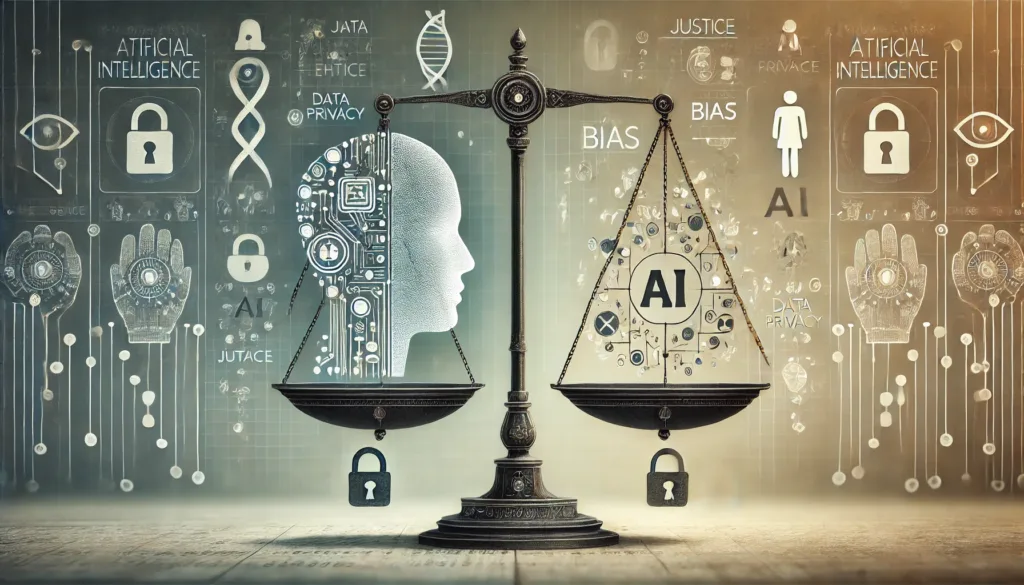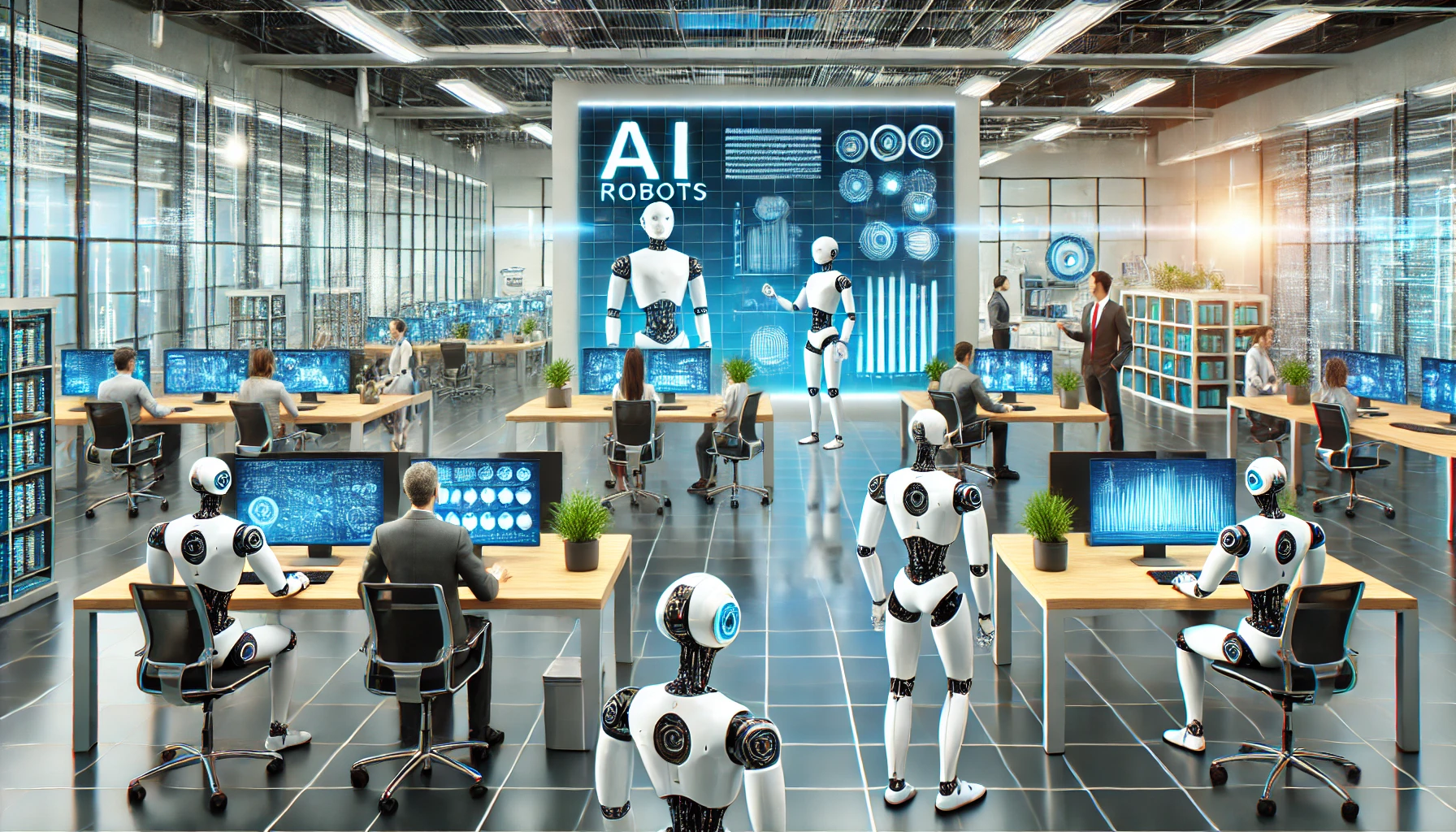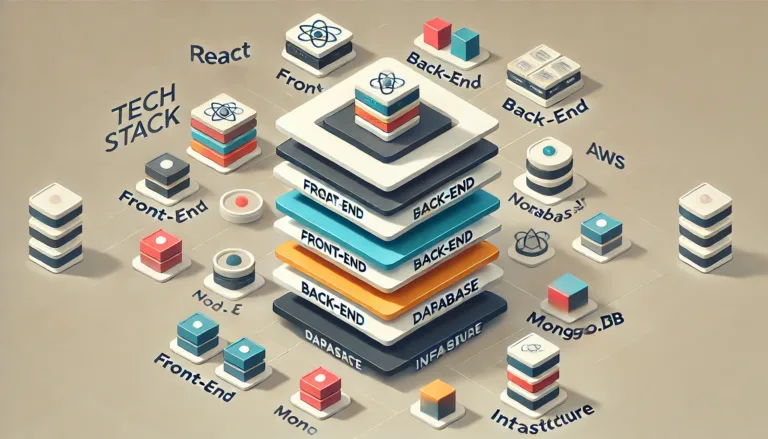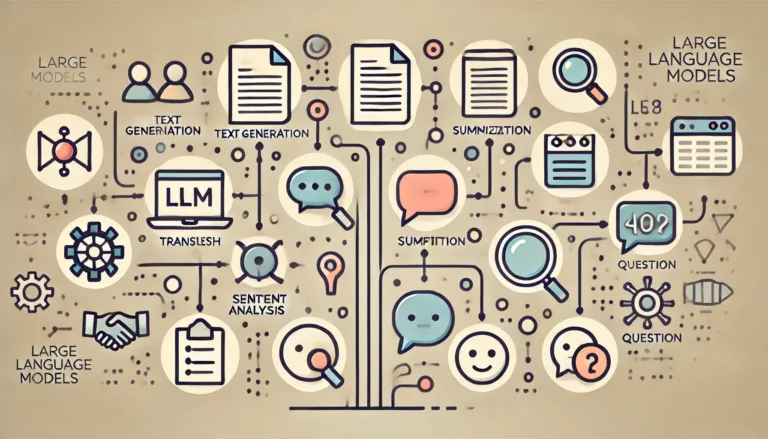Introduction
Imagine a world where machines not only work alongside us but also make decisions that shape our lives—from diagnosing illnesses to driving cars and even deciding who gets a job. Are we on the brink of a technological utopia, or is this a slippery slope into a dystopian future?
Artificial Intelligence (AI) is no longer the stuff of science fiction. It’s a powerful reality, transforming industries and redefining what technology can achieve. From streamlining operations in manufacturing to making groundbreaking advancements in medicine, AI’s reach is pervasive and growing exponentially. Yet, as this technology becomes more deeply embedded in our daily lives, it has sparked heated debates over its potential benefits and dangers.
The question of whether AI is “good” or “bad” is far from straightforward. Its impact on society can be profoundly positive, enhancing productivity, innovation, and problem-solving. Conversely, AI also poses risks—ranging from job displacement and ethical dilemmas to security concerns and over-reliance. This blog delves into the nuances of AI’s dual nature, exploring both the promise and the pitfalls of this transformative technology.

Understanding the Debate
Definition of AI
Artificial Intelligence (AI) refers to the simulation of human intelligence in machines that are designed to think, learn, and adapt autonomously. These systems can perform tasks that typically require human cognitive functions, such as visual perception, language understanding, decision-making, and problem-solving. The functionalities of AI range from simple automation and data analysis to more complex applications like self-driving cars, natural language processing, and advanced robotics.
Why It’s a Complex Question
Determining whether AI is ultimately “good” or “bad” involves evaluating a multitude of factors:
- Ethical Considerations: How should AI be used to ensure it doesn’t perpetuate biases or infringe on individual privacy?
- Economic Impact: AI has the potential to revolutionize industries, but at what cost? Will it lead to mass unemployment or new job creation?
- Societal Implications: As AI systems become more autonomous, who will be held accountable for their decisions? How will human-AI interactions reshape social norms and daily life?
The complexity of these intertwined issues makes it challenging to provide a simple answer, requiring careful scrutiny from multiple perspectives.
Positive Aspects of AI
A. Enhanced Efficiency and Productivity
One of AI’s most celebrated benefits is its ability to streamline processes and boost productivity across various sectors. In manufacturing, AI-driven automation optimizes production lines, reducing human error and speeding up operations. For instance, companies like Tesla have integrated AI to enhance their assembly processes, resulting in a reported 20% increase in output efficiency. In healthcare, AI-powered tools can automate administrative tasks such as scheduling and record-keeping, freeing up medical staff to focus on patient care. According to a McKinsey report, the adoption of AI in these industries could raise global productivity by up to 1.4% annually, underscoring its transformative potential.
B. Improved Decision-Making
AI’s capacity to analyze vast amounts of data in real-time makes it a powerful tool for informed decision-making. In healthcare, AI models can detect patterns in medical images, assisting doctors in diagnosing diseases like cancer with greater accuracy and speed. For example, IBM’s Watson Health uses AI to process and interpret complex patient data, supporting doctors in crafting personalized treatment plans. In business, AI helps companies uncover hidden insights from big data, guiding strategic decisions that would be nearly impossible for humans to deduce alone. A study by PwC suggests that AI-driven insights could contribute up to $15.7 trillion to the global economy by 2030.
C. Innovation and New Opportunities
AI is opening doors to innovations that were previously the realm of science fiction. Autonomous vehicles are redefining transportation, promising safer and more efficient travel. Smart assistants like Google Assistant and Amazon’s Alexa have revolutionized the way we interact with technology, making everyday tasks more convenient and accessible. Beyond these, AI is enabling breakthroughs in personalized medicine, where treatments can be tailored to individual genetic profiles. This surge of innovation is not just creating novel products and services—it’s also paving the way for new industries and market opportunities, from AI consultancy firms to startups focused on niche AI applications.
D. Addressing Global Challenges
AI holds immense potential in tackling some of the world’s most pressing issues. In the fight against climate change, AI systems can optimize energy usage in smart grids, reducing emissions and improving the efficiency of renewable energy sources. One standout example is Google’s use of DeepMind’s AI to cut the energy consumption of its data centers by 40%. In agriculture, AI-powered precision farming uses satellite imagery and sensor data to monitor crop health, predict yields, and reduce water usage, thereby enhancing food security. As the global population continues to grow, these AI-driven solutions will be crucial in ensuring sustainable development and resource management.
Negative Aspects of AI
A. Job Displacement
One of the most prominent concerns surrounding AI is its potential to displace jobs, especially in industries where automation can perform repetitive tasks more efficiently than humans. For example, sectors like manufacturing, retail, and customer service are already experiencing a shift, as machines and software take over roles previously held by human workers. According to a 2020 study by the World Economic Forum, automation is expected to displace 85 million jobs globally by 2025. However, the report also indicates that 97 million new roles may emerge in technology and data-driven fields, highlighting the need for workforce adaptation and reskilling. This shift underscores the importance of upskilling programs and educational reforms to prepare workers for new, tech-centric job markets. Without such measures, entire communities could face economic instability and widening inequality.
B. Ethical Concerns
AI’s deployment is fraught with ethical challenges, especially when it comes to fairness, bias, and privacy. AI systems, if trained on biased data, can inadvertently perpetuate discriminatory practices. For example, a well-known case involved Amazon scrapping an AI hiring tool that systematically discriminated against female candidates due to biased historical data. Similarly, AI used in predictive policing has been criticized for reinforcing racial biases by disproportionately targeting certain demographics. Privacy issues are another major concern, as AI-powered surveillance technologies are increasingly used to monitor public spaces and track individuals, raising questions about civil liberties and data misuse. The potential for these technologies to be misused without proper regulation makes ethical considerations a crucial part of AI development.
C. Security Risks
As AI becomes integrated into critical infrastructure, it also introduces new vulnerabilities. In cybersecurity, AI systems can be exploited to launch sophisticated cyberattacks, manipulate data, or even create highly convincing deepfake content that blurs the line between reality and fiction. Furthermore, AI’s dual-use nature poses a risk for weaponization. Autonomous weapons, which can identify and engage targets without human intervention, present a serious ethical and security dilemma. The United Nations has already raised concerns about these “killer robots,” which, in the wrong hands, could trigger conflicts or cause unintended harm. These security risks highlight the need for stringent safeguards and international cooperation to prevent the misuse of AI technologies.
D. Dependency on Technology
With the growing adoption of AI, there is a risk of becoming overly dependent on technology, which could have long-term effects on human cognitive abilities. Relying on AI to handle complex decision-making might lead to a decline in critical thinking and problem-solving skills among professionals. For example, pilots who depend heavily on automated flight systems may struggle to respond effectively in emergency situations when manual intervention is required. Similarly, over-dependence on AI in areas like healthcare could erode the expertise and diagnostic skills of medical practitioners. This gradual erosion of human skills, coupled with the potential loss of institutional knowledge, poses a significant challenge in maintaining a balance between human intelligence and AI autonomy.
Balancing the Scales: The Path Forward
A. Responsible AI Development
As AI continues to evolve, establishing ethical guidelines and ensuring accountability are paramount to its responsible development. This means creating frameworks that prioritize transparency, fairness, and inclusivity, while mitigating risks such as bias and misuse. One example is Google’s AI Principles, which explicitly prohibit the development of technologies that could cause harm or enable surveillance that violates international norms. Similarly, IBM has established an AI Ethics Board to oversee its projects and ensure they align with ethical standards. Governments are also stepping in; for instance, Singapore’s Model AI Governance Framework provides guidance for companies to incorporate ethical considerations throughout the AI lifecycle, from design to deployment. These initiatives emphasize the importance of embedding ethical values in AI research and development to steer the technology toward positive societal impact.
B. Regulatory Frameworks
Creating robust regulatory frameworks is crucial to managing the risks associated with AI while promoting its benefits. The European Union has taken a leading role in this area with its proposed EU AI Act, which seeks to establish a comprehensive set of rules based on a risk-based approach. It categorizes AI systems into different risk levels, ranging from “unacceptable risk” (e.g., social scoring systems) to “minimal risk” applications. This legislation aims to ensure that high-risk AI systems undergo strict scrutiny, including requirements for transparency, human oversight, and security. However, the global nature of AI presents significant challenges in creating a unified approach, as different countries prioritize various aspects of AI regulation. The lack of international consensus could lead to regulatory fragmentation, making it difficult to enforce standards across borders. To address this, ongoing dialogues at the United Nations and other international bodies are exploring the possibility of global AI norms that balance innovation with safety.
C. Societal Adaptation
Preparing society for an AI-driven future requires proactive measures at multiple levels, including education, public awareness, and workforce development. Educators and policymakers must prioritize integrating AI literacy into curriculums, equipping students with the skills needed to understand and work alongside intelligent systems. Furthermore, upskilling and reskilling initiatives will be essential to help workers transition into new roles created by AI advancements. Companies like Microsoft and Coursera are already investing in such programs, offering courses that focus on digital literacy, data analysis, and AI basics. Beyond technical skills, fostering an informed public discourse is crucial. Communities must engage in open conversations about the ethical implications of AI, ensuring that diverse voices shape the future of this technology. By promoting awareness and preparing the workforce, society can harness AI’s potential while mitigating its disruptive effects, ultimately creating a balanced and inclusive AI landscape.
VI. Conclusion
AI is a transformative technology with the power to reshape industries, enhance productivity, and address global challenges. On the positive side, it boosts efficiency, drives innovation, and improves decision-making. Yet, these benefits are accompanied by significant risks, including job displacement, ethical dilemmas, security threats, and the potential for over-reliance. As we’ve explored, AI’s impact is multifaceted and complex, with the potential for both positive and negative consequences depending on how it is implemented and governed.
The debate over whether AI is good or bad ultimately hinges on how society chooses to develop, deploy, and regulate this technology. AI is neither inherently beneficial nor harmful—it is a tool whose impact depends on human decisions. By fostering responsible AI development, implementing robust regulations, and preparing society for its implications, we can maximize its benefits while minimizing its risks.
To ensure that AI becomes a force for good, it’s vital for all stakeholders—governments, businesses, and individuals—to engage in meaningful discussions about its ethical use and long-term effects. Advocate for balanced AI policies, support educational initiatives, and stay informed about the latest developments in AI. The future of AI is not predetermined; it is shaped by our collective choices and actions.
References
The arguments and points discussed in this blog are based on a variety of sources that explore the benefits and risks of AI. For a deeper dive into these topics, consider visiting the following references:
- OpenAI Blog: Provides insights into AI advancements and ethical considerations.
- Towards Data Science: Features articles on the practical applications of AI and its societal impact.
- Holistic AI Blog: Discusses governance, ethics, and the responsible use of AI technologies.
- DigitalOcean’s AI Articles: Covers the implementation of AI in different domains.
- Defined.ai Blog: Focuses on the future of AI development and its potential implications.
For a more comprehensive list of AI resources, refer to AI Blogs and Tableau’s AI Learning Hub.
FAQ
- Is AI more likely to create jobs or eliminate them?
AI is likely to cause both job displacement and job creation. While automation may replace roles in sectors like manufacturing and retail, it is also expected to generate new opportunities in tech-related fields such as data science, AI research, and digital marketing. The key is proactive workforce adaptation through upskilling and reskilling. - What are some of the ethical concerns associated with AI?
Key ethical concerns include bias in AI algorithms, privacy issues due to surveillance, and the lack of accountability when AI systems make decisions that affect people’s lives. Ensuring that AI is developed transparently and ethically is crucial to addressing these challenges. - How can AI be regulated effectively?
Effective AI regulation requires a balanced approach that promotes innovation while safeguarding against risks. Efforts such as the EU’s AI Act are steps in the right direction, but international cooperation is needed to create standardized rules that apply across borders. - What can individuals do to prepare for an AI-driven future?
Individuals should focus on building digital literacy, learning new skills relevant to AI and data science, and staying informed about how AI is impacting their industry. Being adaptable and open to continuous learning is essential in an AI-driven world. - Can AI truly be controlled or will it eventually surpass human oversight?
While current AI systems are designed to operate under human oversight, the rapid pace of AI development raises concerns about future systems becoming too complex to control. Establishing strong ethical guidelines and regulatory frameworks now will be crucial in ensuring that AI remains a tool that serves humanity’s best interests.









